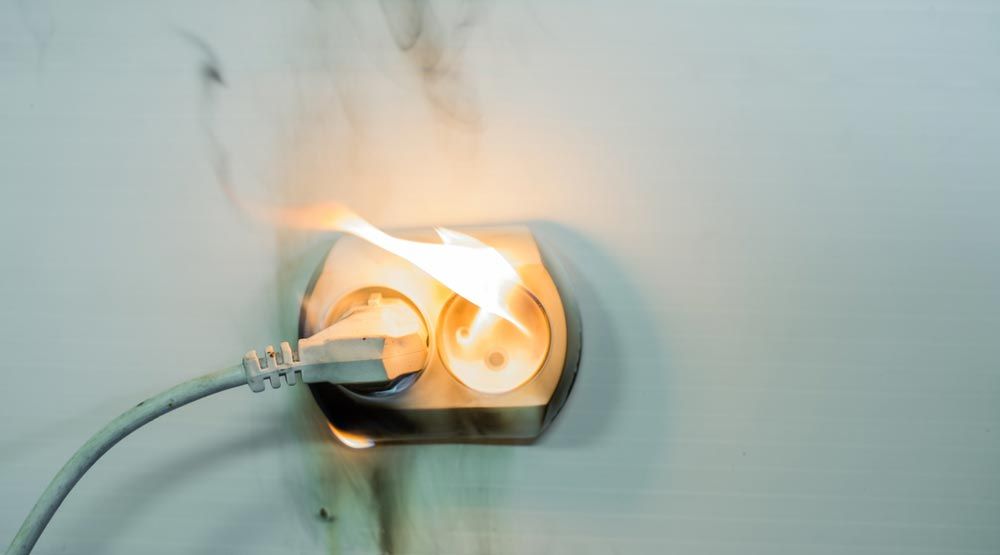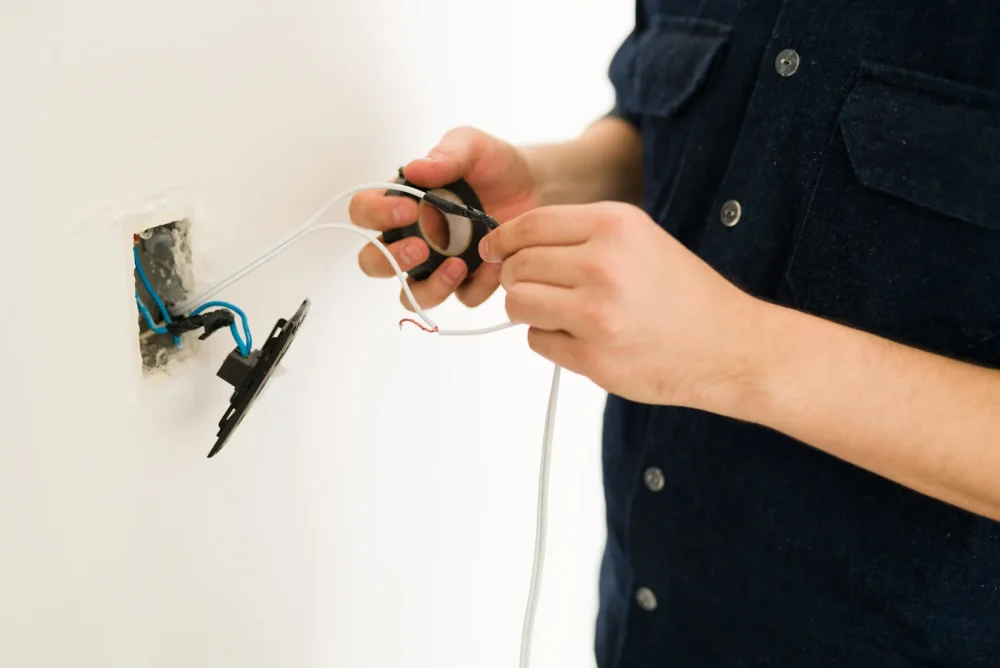A faint buzzing behind the walls or a flicker in your hallway could be your home’s way of sounding the alarm. Electrical wiring is one of those silent systems you rarely think about until something goes wrong and the consequences can be far more serious than a tripped fuse.
If you’re a homeowner in the UK you’re responsible for more than just keeping the lights on. Knowing the warning signs of wiring trouble can protect your family and your investment. Before you brush off that odd smell or ignore a stubborn socket it’s worth understanding exactly what your home might be trying to tell you.
Common Wiring Risks in Homes
Electricians Hitchin way and anywhere else around the UK will be the first to note that you might notice quirks in your home’s electrics, yet overlook them as harmless. Here, you will find how common risks travel quietly through your walls waiting for a spark to feed on carelessness.
Outdated Electrical Systems
You will hear the click from a round pin socket or see original rubber wiring peeking from a fuse box. These relics, you might guess, went out decades ago. Properties built before 1970 might still carry knob and tube or fabric-wrapped cables which can’t cope with smart devices and power-hungry appliances you find in modern homes. Circuit breakers can trip with little warning, insulation might crumble with a touch. If you test a socket and see scorch marks, this is your hint; old wiring might tick quietly until a fault wakes it up.

Overloaded Circuits
You rarely count how many gadgets share one extension, do you? You might keep lamps, routers, televisions and endless chargers fed from a single wall plug. You will know trouble’s brewing when you notice warmth in the sockets or a faint burning scent after a busy day. Circuit breakers may flip on stormy evenings, or walls may hum and wires vibrate beneath your fingertips. When hungry appliances share too few outlets your system strains, waiting for a big load to tip it past safe limits. Fires can start at these hidden pinch points, so you should think before plugging in yet another device.
DIY Wiring Mistakes
You may fancy yourself handy until light switches buzz or ceiling roses feel loose to the touch. Inexperienced hands might reverse polarity or forget earth wires slumber behind plaster. You will find loose wires behind socket covers, or spot dodgy junctions held together with tape not terminals. Quick fixes like wire nuts jammed in, or sockets hanging by a thread, can fool you into thinking the job’s finished. Next time your lights flicker or trip, check if the culprit is your last bit of DIY electrics. Your safety depends on keeping amateur wiring from turning quiet faults into noisy disasters.
Signs of Electrical Problems
Sometimes you walk into a room and something feels off, light shifting strangely or a whiff of warmth sneaking out from a socket. Electrical wiring throws up hints for those paying attention and your safety might hang on your ability to interpret them. Hidden issues signal in subtle tones—you will miss them if you blink too quickly.
Flickering Lights
Your overhead bulb starts to stutter, a dance of brightness and shadow. You notice the rhythm falter when appliances snap on or off. This routine can slip under the radar when you leave hallway lights on for a minute or two. If you see pulsing from several fixtures, your wiring might be strained or a loose connection may have crept in. You will find that stairway light giving an eerie glow or the dining room chandelier shaking like leaves in wind can speak of worn cables behind plaster. In the case that these flickers spread house-wide, your main circuit connections call for attention. Ever watched light flicker and wondered if you might lose power altogether? Pause and consider how this pattern starts.
Burning Smells and Warm Outlets
Step past your kitchen and there it is—a distinct tang, acrid and sharp. Burning plastic, a scent you will not mistake once learned, lingers around a plug or outlet. Hands hover over a socket, the warmth palpable like breath in the cold. If any outlet or switch grows hot, you discover a sign that wires could be fraying or insulation melting away. You might spot brown marks creeping around edges of covers, like a shadow that refuses to fade. You will find that these subtle warnings rarely come alone. When outlets hum with gentle heat or give off odours, wires behind the scenes might be screaming for relief.
Frequent Circuit Breaker Trips
Breakers slam down again and again and you pause, counting the clicks. The living room blacks out, toaster silenced mid-crunch, and you are left wondering if the next flip will wake something up. Frequent trips can mean too many devices drawing from a tired circuit. In the case that a single room falls dark every morning, you might trace a line from overloaded sockets to a fuse box that’s giving up the fight. Maybe it is old wiring, maybe an appliance on its last legs, but either way you will sense the undercurrent of strain. You realise your breaker acts as a sentry, always on guard, ready to shut things down before danger escapes. When the pattern repeats, how many resets will it take before you question what lies beneath those switches?

Essential Wiring Safety Tips for Homeowners
You walk around your home and could be blissfully unaware that wires snake behind the walls like shy creatures in shadows. Your vigilance and a healthy curiosity about what lies unseen might shield your family from silent hazards.
When to Call an Electrician
Flickering lights persist even after changing bulbs, and your sockets hum like bees after a storm. You’ll sometimes notice a smell, sharp and acrid, curling up from a switch—almost metallic in the air. Reluctant as you are to pick up the phone, your peace of mind deserves priority. If breakers trip repeatedly when you use the kettle or hairdryer, or you spot dark stains blooming around plug points, you cannot afford a wait and see. Any time wires appear chewed or you find switches heating up to the touch, a certified electrician should enter the scene. You may feel confident tackling small tasks, but electrical systems hide complexity; professional expertise cannot be matched when unpredictable signs emerge.
Safe Use of Extension Cords and Outlets
Extension cords wind through your rooms like ribbons you wish looked tidier. Overloading one socket with multiple adaptors will warm the plastic case, sometimes to the point where the cord feels soft or smells rubbery. You might feel tempted during holidays to string fairy lights and chargers from a single plug but resist, as too many high-wattage devices can strain the wiring. Avoid running extension cords beneath rugs, as trapped heat could smoulder with time. You will enhance safety by plugging appliances directly into wall outlets whenever possible. Regularly check for frayed ends or discoloured terminal blocks; anything unusual, even a faint clicking when plugging in, means you should replace the cord before the next use. Have you felt your sockets after they run your tumble dryer for an hour? Cool and silent means safe.
Preventative Measures and Maintenance
When you dedicate time to preventing wiring mishaps you anchor the safety of your home to habits that shield against disruption. Energy moves in ways you can’t always forecast so keeping a close eye on your wiring transforms silent risks into manageable chores you will take in your stride.
Regular Inspections
Regular inspections can highlight weak spots you will miss in day-to-day living. You might spot tiny scorch marks around outlets a hint of heat or perhaps a faint plastic tinge in the air. Sometimes switches grow stiff or sockets loosen under your fingertips—each sign whispers of a bigger story beneath the surface. Would you spot the fine web of hairline cracks along an old lighting fixture almost like veins beneath worn skin You will find that professional checks unearth the subtle clues before trouble roots itself deep and expensive. You might catch a stubborn fuse or lingering hum before it sparks a chain reaction. If you pause now and then to review your sockets and fuse boards, you guard the corners of your home where electrical issues like to gather.
Upgrading Old Wiring
Upgrading old wiring—now that’s where peace of mind builds itself room by room. You will find old houses keep their secrets in walls so examine what lurks there especially if your property predates the days of double glazing and WiFi. Worn-out fabric wires or old-school circuit breakers create hazards modern wiring sidesteps with ease. You will sometimes sense fragility when plugging in new tech or see breakers tripping without warning: both signal wires outgrown by today’s demands. Ask yourself how many times your lights flicker when the kettle sings or the washing machine rumbles to life. You can invest in modern cables and distribution boards often breathing new convenience and cutting risk in a single move. With an upgrade, you place control back in your hands, disarming those hidden risks that old materials carry.
Final Thoughts
Staying alert to the smallest changes in your home’s electrical system can make all the difference to your safety and peace of mind. Don’t underestimate the value of regular inspections and professional advice when you’re unsure about your wiring’s condition.
Taking the initiative now protects your family and property from preventable dangers. By acting promptly and maintaining your electrical system, you’re investing in a safer and more reliable home environment for years to come.
